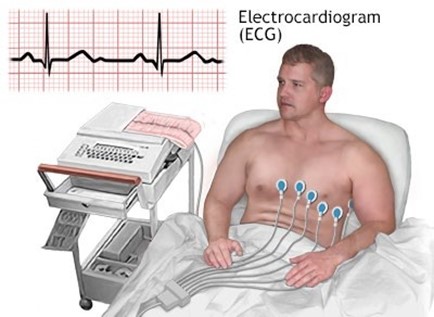A nurse is caring for a client who has an acute respiratory failure (ARF). The nurse should monitor the client for which of the following manifestations of this condition? (Select all that apply.)
Nausea
Severe dyspnea
Headache
Decreased level of consciousness
Hypotension
Correct Answer : B,C,D,E
Choice a) is incorrect because nausea is not a common manifestation of ARF. Nausea is a sensation of discomfort in the stomach that may or may not lead to vomiting. Nausea can be caused by many other conditions, such as gastroenteritis, motion sickness, or pregnancy.
Choice b) is correct because severe dyspnea is a common manifestation of ARF. Dyspnea is a subjective feeling of difficulty or discomfort in breathing. Severe dyspnea indicates that the client is not getting enough oxygen and may have low blood oxygen levels (hypoxemia) or high carbon dioxide levels (hypercapnia).
Choice c) is correct because headache is a common manifestation of ARF. Headache is a pain or discomfort in the head, scalp, or neck. Headache can be caused by high carbon dioxide levels (hypercapnia), which can affect the blood vessels and nerves in the brain.
Choice d) is correct because a decreased level of consciousness is a common manifestation of ARF. Level of consciousness is a measure of how alert and oriented a person is. A decreased level of consciousness can be caused by low blood oxygen levels (hypoxemia), high carbon dioxide levels (hypercapnia), or acid-base imbalance, which can affect brain function and mental status.
Choice e) is correct because hypotension is a common manifestation of ARF. Hypotension is a condition in which the blood pressure is lower than normal. Hypotension can be caused by low blood oxygen levels (hypoxemia), which can impair heart function and reduce cardiac output.
Nursing Test Bank
Naxlex Comprehensive Predictor Exams
Related Questions
Correct Answer is B
Explanation
Choice A: Provide a brightly lit environment is not an intervention that the nurse should take. A brightly lit environment can stimulate the brain and increase intracranial pressure. The nurse should provide a quiet and dimly lit environment to reduce sensory stimuli and promote rest.
Choice B: Elevate the head of the bed is an intervention that the nurse should take. Elevating the head of the bed to 30 degrees can help reduce intracranial pressure by facilitating venous drainage from the brain and decreasing cerebral blood volume. The nurse should avoid flexing or extending the neck, which can impede blood flow and increase intracranial pressure.
Choice C: Encourage a minimum intake of 2000 mL (67.6 oz) of clear fluids per day is not an intervention that the nurse should take. A high fluid intake can increase intracranial pressure by increasing blood volume and cerebral edema. The nurse should monitor fluid balance and restrict fluid intake as prescribed to maintain normal osmolality and prevent fluid overload.
Choice D: Teach controlled coughing and deep breathing is not an intervention that the nurse should take. Coughing and deep breathing can increase intrathoracic pressure, which can increase intracranial pressure by reducing venous return from the brain. The nurse should avoid activities that can increase intrathoracic pressure, such as straining, sneezing, or blowing the nose. The nurse should also administer oxygen as prescribed to maintain adequate oxygenation and perfusion of the brain.
Correct Answer is ["A","B"]
Explanation
Choice A: Inspecting the electrode pads is an action that the nurse should take. The electrode pads are adhesive patches that atach to the skin and connect to the ECG machine. The nurse should inspect the electrode pads for expiration date, cleanliness, and stickiness, and replace them if necessary. The nurse should also check for any signs of skin irritation or allergy from the electrode pads.
Choice B: Instructing the client not to talk during the test is an action that the nurse should take. Talking during the test can interfere with the ECG recording and cause artifacts or false readings. The nurse should instruct the client to remain still and quiet during the test, and avoid any movements or activities that can affect the heart rate or rhythm, such as coughing, deep breathing, or shivering.
Choice C: Administering an analgesic prior to the procedure is not an action that the nurse should take. An analgesic is a pain reliever that can be given orally, intravenously, or topically. An analgesic is not necessary for an ECG, as it is a noninvasive and painless procedure. An analgesic can also alter the heart rate or rhythm and affect the ECG results. The nurse should only administer an analgesic if prescribed by the provider for another reason.
Choice D:It is more common to use alcohol swabs, and not water, to clean the skin as they are better at removing oils and ensuring good adhesion of the electrodes.
Choice E: Keeping the client NPO after midnight is not an action that the nurse should take. NPO means nothing by mouth, which is a restriction of food and fluids before certain procedures or surgeries. NPO is not required for an ECG, as it does not involve any anesthesia or sedation. The nurse should allow the client to eat and drink normally before and after the test, unless instructed otherwise by the provider.

Whether you are a student looking to ace your exams or a practicing nurse seeking to enhance your expertise , our nursing education contents will empower you with the confidence and competence to make a difference in the lives of patients and become a respected leader in the healthcare field.
Visit Naxlex, invest in your future and unlock endless possibilities with our unparalleled nursing education contents today
Report Wrong Answer on the Current Question
Do you disagree with the answer? If yes, what is your expected answer? Explain.
Kindly be descriptive with the issue you are facing.
